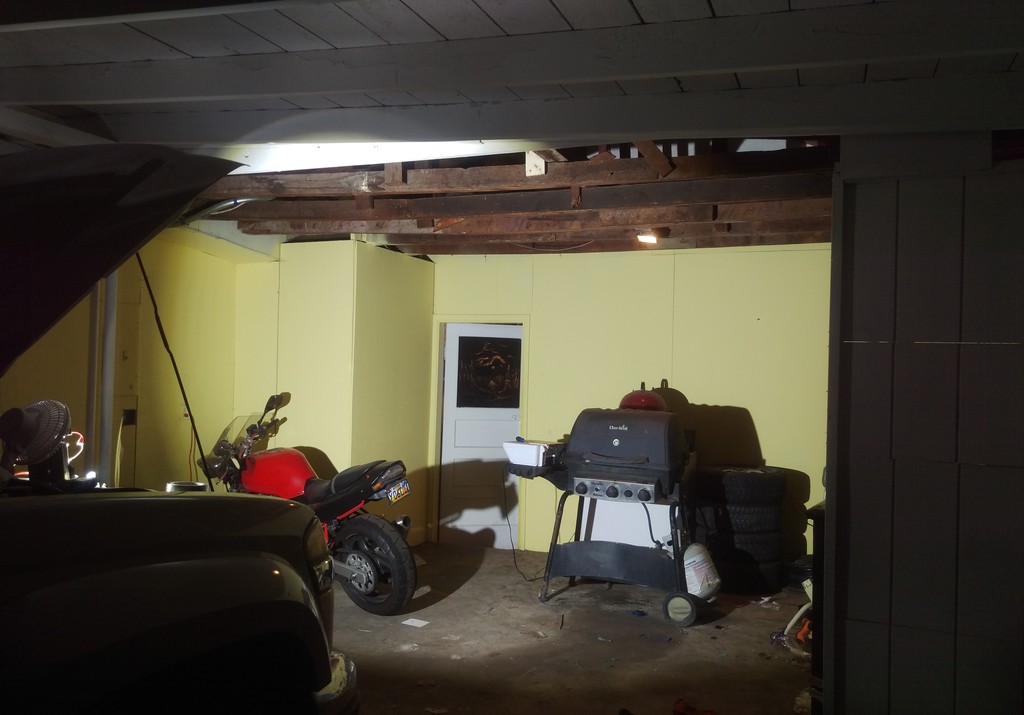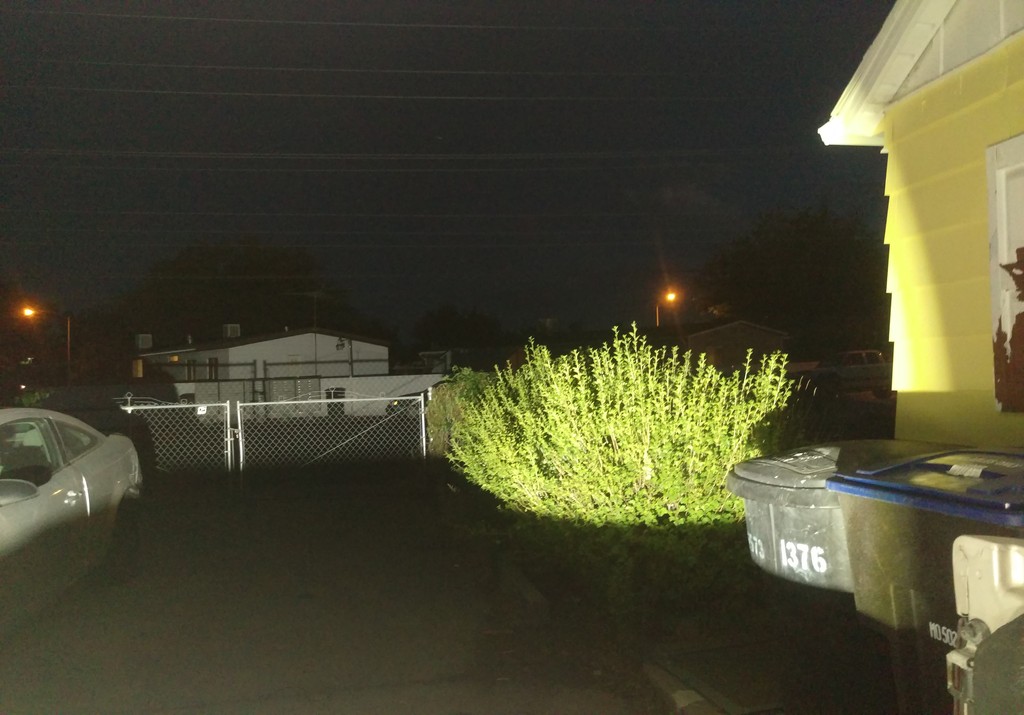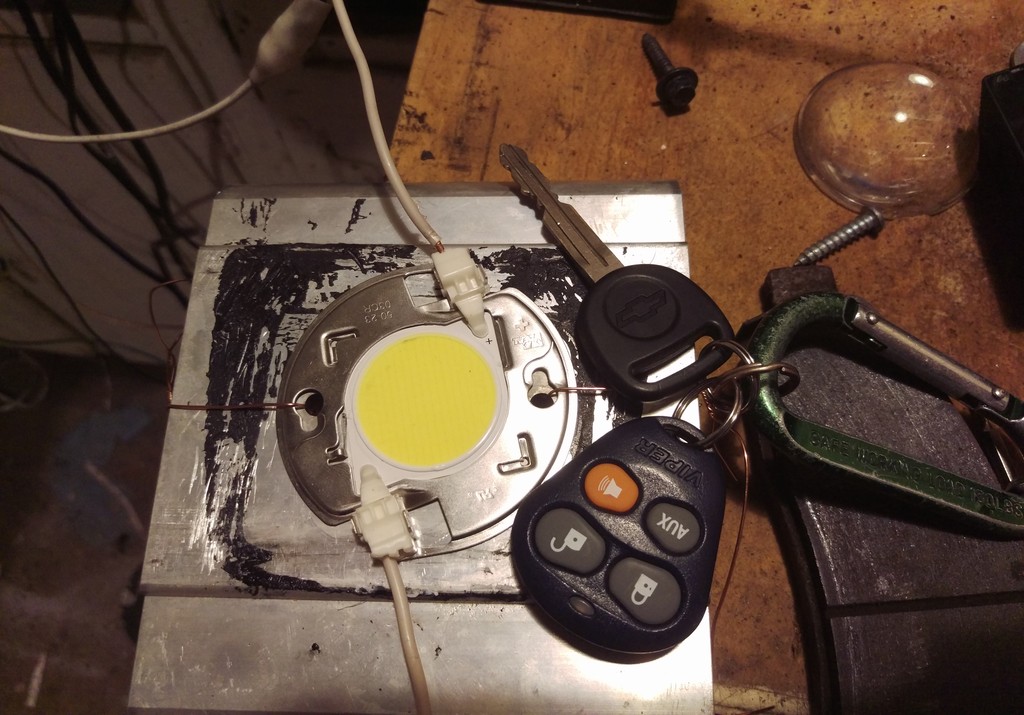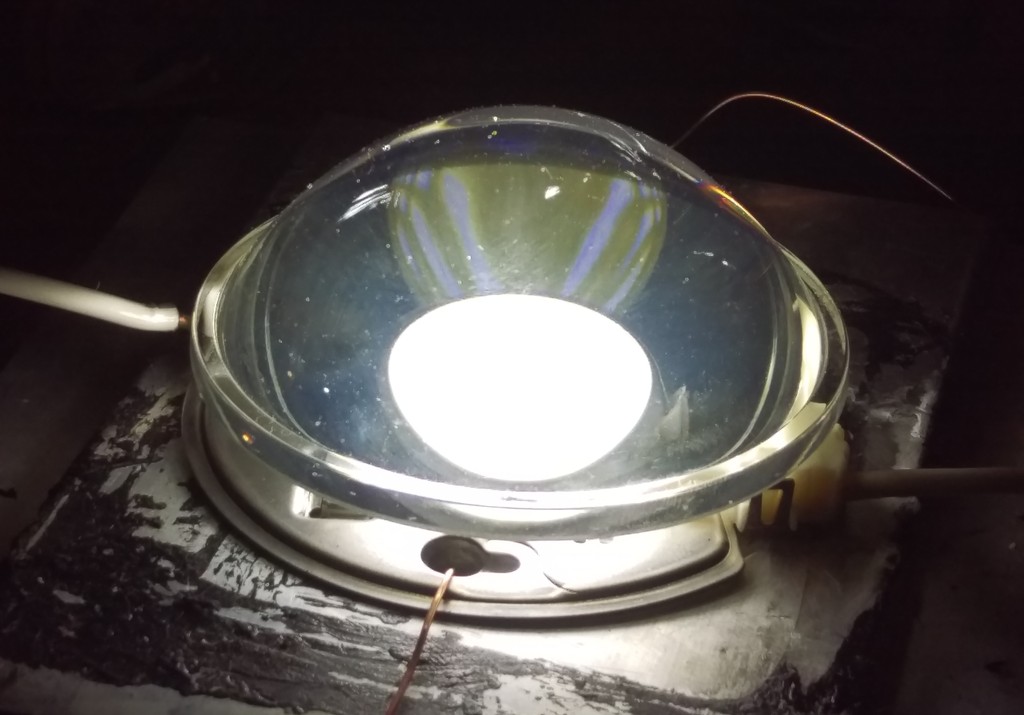New LED light idea
#1
So guys I'll put on here what I am doing. My idea is that LED light bars are the lazy way to put a lot of LED light on the trails. I think this because the way they make their 'amazing' amount of light is by combining anywhere from 20 to 60 lower powered LEDs to create the light needed. This idea was fine, but lazy as it is far easier to exhaust the heat 100 Watts of LED heat from multiple sources spread out on a heat-sink, rather than a very high powered 'individual' die. This is my idea, to use a single 'die' with a larger heat-sink, to confine the amount of area needed for ridiculous amounts of light.
This LED die from Cree puts out an amazing 12000 lumens from the area the size of a silver dollar.

This is the Cree CXB Cob array, housing over 100 individual dies coming in at a maximum power rating of 136.8 W of LEDness. To give some reference, that's just about 10X the amount of light coming from one of your headlights.
I have ordered one of these dies and will mount it to a CPU heatsink to handle the heat. A good CPU heatsink is capable of keeping a 100W CPU at 40*C or less, so a little more power shouldn't be an issue. These have current and luminosity ratings at up to 100*C, it's not as good as I'd like, but it means that they are safe up to that temp should the something fail.
I have plans to prototype some off road lights using these with some adjustable projector lenses so they could be spot, or flood lights. The idea here is that you could install two of these types of lights in your fog light housings, or even in the grille area, and have double the light that a typical 50" light bar can put out, not to mention the optics would be adjustable to whatever you'd like them to be. There is a posiblility to mount several of these to a water block and use a radiator system to get unreal levels of light in tiny areas. I've got space to do this for 4 of them in my parking light areas on the Coly for some idea how small this could be. (4 * 12000 = 48000 lm )
)
If this goes anywhere, I'll let you all know, but I think it's a pretty cool idea. If I think this has a market (which for now I think they might) I may look into manufacturing these. Price should be comparable to the name brand LED bars, but should be far more feasible to install in any kind of vehicle. Ruggedness should be about the same if not more seeing as if you roll the vehicle, these wouldn't be on the roof to be crushed.
We'll see how it goes ya?
Cree CXB datasheet:
http://www.cree.com/~/media/Files/Cr...ds-CXB3070.pdf
This LED die from Cree puts out an amazing 12000 lumens from the area the size of a silver dollar.

This is the Cree CXB Cob array, housing over 100 individual dies coming in at a maximum power rating of 136.8 W of LEDness. To give some reference, that's just about 10X the amount of light coming from one of your headlights.
I have ordered one of these dies and will mount it to a CPU heatsink to handle the heat. A good CPU heatsink is capable of keeping a 100W CPU at 40*C or less, so a little more power shouldn't be an issue. These have current and luminosity ratings at up to 100*C, it's not as good as I'd like, but it means that they are safe up to that temp should the something fail.
I have plans to prototype some off road lights using these with some adjustable projector lenses so they could be spot, or flood lights. The idea here is that you could install two of these types of lights in your fog light housings, or even in the grille area, and have double the light that a typical 50" light bar can put out, not to mention the optics would be adjustable to whatever you'd like them to be. There is a posiblility to mount several of these to a water block and use a radiator system to get unreal levels of light in tiny areas. I've got space to do this for 4 of them in my parking light areas on the Coly for some idea how small this could be. (4 * 12000 = 48000 lm
If this goes anywhere, I'll let you all know, but I think it's a pretty cool idea. If I think this has a market (which for now I think they might) I may look into manufacturing these. Price should be comparable to the name brand LED bars, but should be far more feasible to install in any kind of vehicle. Ruggedness should be about the same if not more seeing as if you roll the vehicle, these wouldn't be on the roof to be crushed.
We'll see how it goes ya?
Cree CXB datasheet:
http://www.cree.com/~/media/Files/Cr...ds-CXB3070.pdf
#5
That would be tough with how small they are, but if there is room behind them for a sizable heat sink, then it may work without the lens I want to put on them with some modification to the fog housing of course. We'll see. I've got the led now, I just need my constant current / voltage driver to get here and to find a good heat sink to mount it on.
#6
So I've been playing with this a little.

That light above the grill is a 55W halogen rated at about 1500 lumens to give you an idea how bright this thing is with the flood lens. The lens idea is going to need some major tweeking to get it to work how I want it to, but that will come with some playing with ray tracing software. Custom lens for this idea will be a must, unless I can find something that I couldn't find after several hours of googling.

Here it is pointed across the street with the flood lens, about 50 yards to the building.

An idea of how small the LED is for the brightness. The yellow part is the actual phosphor that produces the yellowish part of the white light. The leds produce blue light that excites the phosphor and also provides the blue portion of the white light.

Here's the flood lens on the emitter lit at less than 1/3rd power.

Still working on getting a real heatsink capable of sustainable use. This one is just temporary to get an idea of lensing and function. Once I have the real heatsink I can work on mounting and real output testing.

That light above the grill is a 55W halogen rated at about 1500 lumens to give you an idea how bright this thing is with the flood lens. The lens idea is going to need some major tweeking to get it to work how I want it to, but that will come with some playing with ray tracing software. Custom lens for this idea will be a must, unless I can find something that I couldn't find after several hours of googling.

Here it is pointed across the street with the flood lens, about 50 yards to the building.

An idea of how small the LED is for the brightness. The yellow part is the actual phosphor that produces the yellowish part of the white light. The leds produce blue light that excites the phosphor and also provides the blue portion of the white light.

Here's the flood lens on the emitter lit at less than 1/3rd power.

Still working on getting a real heatsink capable of sustainable use. This one is just temporary to get an idea of lensing and function. Once I have the real heatsink I can work on mounting and real output testing.
#10
So, to be clear, your pictures show performance with less than 10 volts across the LED? Would it be possible for you to measure the actual voltage across the LED element on your test setup?
A 1 amp (1000 mA) fixed current source at ~7 volts is very easy to build with a 12 V input to a single voltage regulator and a resistor.
It looks like the "Buck puck" DC LED drivers put out fixed current at Vin - 2V, so that would be 10V for a typical automotive setup.
A 1 amp (1000 mA) fixed current source at ~7 volts is very easy to build with a 12 V input to a single voltage regulator and a resistor.
It looks like the "Buck puck" DC LED drivers put out fixed current at Vin - 2V, so that would be 10V for a typical automotive setup.



